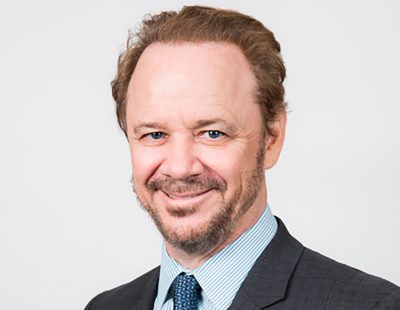CRE Leaders Predict the Market
As we celebrate our 30th anniversary, CPE asked some real estate industry leaders to take a look back at past prophecies and evaluate which ones became reality, then offer their own predictions for the next decade.
By Alexandra Pacurar
As we celebrate our 30th anniversary, CPE asked some real estate industry leaders to take a look back at past prophecies and evaluate which ones became reality, then offer their own predictions for the next decade. So, what should we expect from the future? According to them, it seems we are in for an exciting ride.
CPE: During your career in real estate, what have been the most significant predictions about the industry, and how many of them are true
Thurber: Change is inevitable. In the best of times, there will be dark days ahead. In the worst of times, there will be light at the end of the tunnel. Real estate was, is and will always be cyclical. It is more “when,” not “whether,” the change will come. That is the important question. Those who predicted current market environments would last throughout an investment cycle were inevitably wrong.
Despite that cyclicality, the prediction 30 years ago that real estate investments would become an accepted and standard allocation for an institutional portfolio was correct—but not obvious in those days. Real estate has provided important characteristics to a portfolio and has, over the long term, played that role well. Today, institutional CIOs are more knowledgeable about real estate and understand and appreciate its role in the broader investment portfolio, relative to 30 years ago.
Ansel: One of the oldest and truest axioms in real estate is the importance of location, location, location. This axiom is accurate, but even more so if you have a great location and maintain the quality of the community at that location. Even as styles change, a well-located and well-maintained community will continue to deliver great value for the long term.
There was an expectation years ago that real estate opportunities and consumer preferences for housing would continue to push to the next ring road in cities and grow away from city centers. As population grows, many cities do continue to expand. However, there has been a rejuvenation over the last 15 years of the urban core for cities and the recognition of the desirability of the walkable live-work-play neighborhood.
Lee: As a real estate futurist and strategic advisor to nearly 500 real estate firms, I am constantly requested to identify new growth sectors, emerging markets and cycle changes. In January 2004, I predicted the “Age of Real Estate” leading to the 2008 real estate downturn. In 2004, I predicted the likely shift back to the urban core and a dramatic rise in urban mixed-use and redevelopment opportunities.
In 2005, I predicted the future shift and likely consolidation of brokerage firms. In 2006, we predicted the likely decline of homeownership into the low 60s. In 2007, I predicted the likely shift to a greater reliance on technology and connectivity and the emergence of new competitors. In early 2016, we presented 100 predictions for the real estate industry heading into 2025. We have been fairly accurate in our predictions. The one prediction we made in 2009 that has yet to materialize is the emergence of three global real estate providers by 2020. Over the past 20-plus years, our advice to clients concerned about the future has been to “not wait … but go out and create it.”
Straneva: Thirty years ago, when commercial real estate was largely family owned and local, Stan Ross and Sam Zell proposed the radical concept of “liquid real estate.” They suggested that real estate could be publicly traded in a way that would add transparency and liquidity, and let investors take advantage of the real estate in their portfolios to realize returns in a way they hadn’t before. It would allow the easy movement of capital into an asset class that had up to this point been fairly illiquid.
I knew this was a trend worth watching, and over the course of my career, I’ve seen the commercial real estate sector transformed from a small, mostly family or locally owned model to a global, publicly owned model through public and private REITs. This has allowed for the better movement of capital, which in turn has allowed real estate companies to seek out better-quality properties and improve the properties in their portfolios. The REIT market has increased exponentially, with average values growing from $1 billion to $2 billion to over $20 billion. In fact, the size and stability of the REIT market helped to insulate the entire real estate sector from the financial crisis in 2007-08. Ross and Zell were right; this prediction about our industry turned out to be true.
Ross: During my career, predictions were made that mortgage-backed securities could be the solution to financing all housing and commercial property transactions. It didn’t happen; that prediction did not hold, as markets weakened and as interest rates were low. It didn’t make a lot of sense for the marketplace. Banks and other financial institutions were not in the market to the extent they are today. What has happened and what is happening is we are experiencing Dodd-Frank changes. Secondly, the agencies (Fannie Mae and Freddie Mac) were competing with the 600-pound gorillas, and the bank balance sheets really improved significantly as well as the mortgages that they were holding.
Henry: Folks have been predicting a return to higher interest rates and higher cap rates for a very long time. While intuitively correct that cap rates should return to some sort of historic mean, the real estate cycle has not played out that way, and it remains an uncertain premise with huge implications for real estate values and investments. No one wants to buy assets if they will be worth less in the near future, but by the same token, no one is compensated for not doing deals, and business continues. As Milton Cooper likes to say, “I never knew less.”
CPE: What are your predictions for the next stage of the industry?
Thurber: Environmental, social and governance (ESG) factors will become an accepted and integral part of the entire real estate investment process—from acquisition decisions, throughout the ownership period, to final sale analysis. Sustainability will be best practice, and high-performance properties will be required to incorporate an increasing amount of sustainability characteristics in order to attract and retain tenants and provide strong investment returns. In terms of expansion of these features, sustainability today is beginning to go beyond energy, water and waste metrics to look at health and wellness. In the future, building owners will also realize their role in ensuring that the sustainability and resilience of the community in which the building is located impacts the building’s investment performance and risk profile. The best building owners will need to be strong community leaders, as well.
Ansel: Disruptive technologies and future innovations will meaningfully change the way we run our businesses and serve our customers. Even changes that are not directly associated with our businesses—working from home, driverless cars—will have an impact on how the multifamily housing industry creates value if the changes impact how our residents choose to live. Organizations that don’t learn how to adapt and change in this environment will not survive.
One of the most important tools for our future will be learning how to collect and use the data we currently have or should have about our residents and in turn use this information to create more custom offerings to match a resident’s needs. Over time, residents’ needs and desires will continue to morph and change; thereby creating an ability to have a flexible design in an apartment home will create long-term value.
Lee: The real estate industry is clearly experiencing transformational change. Old ways of conducting business are no longer applicable. What one would assume to be a fact or trend can no longer be relied upon. New competitors are emerging, along with new ways of acquiring/selling, financing, developing, leasing and managing real estate assets. By 2025, I expect there to be 30 to 35 percent fewer traditional real estate firms than in 2010.
Robots will replace many real estate functions, and it would not be surprising to see robots construct mid-rise buildings. Technology will dramatically reshape how we work, shop, live and recreate. Mobile/wearable technology, AI, augmented reality, 3D printing, automation of knowledge work, e-commerce, advanced materials and autonomous vehicles will reshape real estate firms and their role in society. By 2025, 55 to 60 percent of today’s CEOs will likely be retired or phasing down. The U.S. will be moving to a cashless society. A certified underwriter by 2025 is a real possibility. The real estate industry will likely be faced with a shortage of 15,000 to 25,000 “qualified workers.” By 2025, one or more of the large real estate service firms will be acquired by Google. A large apartment company will be acquired by Marriott or Hyatt. Amazon will control as much as 15 percent of grocery sales. Up to 60 percent of real estate transactions will be initiated and/or completed online. Women may comprise as much as 40 percent of C-suite positions within real estate firms nationwide.
There are more than 30 transformative events occurring simultaneously as the real estate industry gets ready for “Overmorrow.” My best advice is to stay connected, think out-of-the-box, listen to those younger than you, challenge the status quo and enjoy the ride. It is going to be exciting.
Straneva: There is a trend toward capturing a wider amount of information for strategic purposes—related to demographic shifts, customer behavior, the impact of technology and other disruptive forces. Companies are looking to capture information to determine how these forces will affect their business. Convergence in data collection is happening in multifamily, retail, hospitality and other asset classes, as they learn how they can leverage all the data they have collected to understand customer behavior relating to the components of their business. Among other things, there is a greater need to capture and understand customer preferences so real estate operators can create a complete experience for their customers and use that in their strategic planning process.
Ross: I don’t think the new administration will essentially destroy or get legislation that would adversely impact the (government-sponsored enterprises). I’m seeing an increased activity in the mortgage-backed bonds by the banks and other institutions, interest rates moving up and an increased amount of development activity and new starts, especially in housing.
My prediction is that the capital markets will be strong with mortgage-backed securities, but more significantly, a larger impact will be that of the REIT sector. I believe that mortgage-backed securities will rise from the ashes again, much stronger and much more acceptable in the financial markets, both domestic and foreign, and will be a dominant player in the future. This increase in securitization will start as interest rates begin to increase. I think we will start seeing this return by the time 2017 ends. The banks are stronger now that they can hold these mortgage portfolios longer rather than securitize.
I believe that REITs will continue to gain acceptance and accelerate activity, and will be the dominant financial real estate security in the marketplace.
Henry: The Internet in all ways imaginable and unimaginable is changing the demand, values and usage of all types of commercial real estate. As a recent bank economist said, and as just one simple example, “For every incremental $1 billion of e-commerce sales, there is incremental demand for 1 million square feet of industrial space and reduced demand for 2 million square feet of retail space.” That alone has a profound impact on two property sectors. Investors are and will be guessing in all types of ways how Internet “disrupters” will be impacting real estate values, loan delinquencies, portfolio valuations, etc. Add interest-rate uncertainty and a fluid political dynamic, (and) we are certainly in fascinating times.








You must be logged in to post a comment.